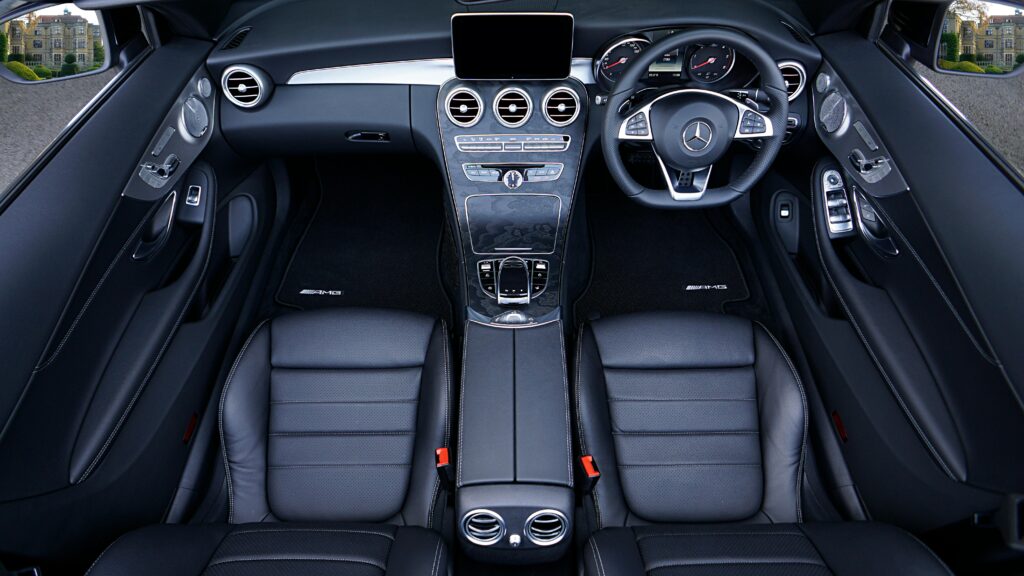Mercedes-Benz: From Garden Innovation to Luxury, and Quality

Do you know that the Mercedes-Benz of today has its roots in the world’s first gasoline-powered automobile, created in 1885? It’s a fascinating story of how Carl Benz went from tinkering with wheels in his garden to crafting a brand synonymous with luxury, precision, and innovation. Buckle up as we take a playful drive through history and explore how Mercedes-Benz has steered its way to the top through marketing genius and forward-thinking strategies.
The Birth of automobiles
Picture this: It’s 1885, and Carl Benz is in his garden, not planting flowers but inventing the first gasoline-powered car. Yes, the first patent motor car was born here with a lightweight design and a high-speed single-cylinder four-stroke engine (a whopping 0.75 horsepower!).
One keen observation: The motor car resembled a horse carriage but replaced the horse with innovation, a genius move that blended familiarity with futuristic technology. The design may seem rudimentary now, but at the time, it was a bold leap forward that promised a new era of mobility.
But Carl didn’t just stop at building it. His wife, Bertha Benz, unknowingly pulled off what might be the world’s first test drive marketing stunt. She and her two sons secretly took the car on a 180-kilometer journey. Talk about a family road trip! This unplanned act became an early example of organic trust-building marketing. If Bertha trusted it for her family, why wouldn’t others?
Marketing Strategies That Drove Success
1. Trust Through Personalization
Let’s face it, people back then were skeptical about cars. Imagine someone telling you, “I built this car in my garden; trust me, it’s safe!” However, Carl’s family’s use of the car in public answered that trust question in a big way. People saw it, believed it worked, and, voila, trust was established.
This was more than just a lucky accident; it was the earliest form of personalized marketing. Showing real people, especially family members, using a product creates a sense of authenticity. Carl’s unintentional strategy hit all the right notes of trust: competence, character, and caring.
2. Partnership Strategy: Two Visionaries, One Brand
By 1926, Carl Benz and another automotive genius, Gottlieb Daimler, merged their companies to create Daimler-Benz AG. This partnership wasn’t just a business deal but a meeting of two visionaries obsessed with redefining transportation. Both brought passion to the table, ensuring the brand stayed focused on innovation rather than just sales.
The result? A brand that set new standards for durability, luxury, and technological excellence. Mercedes-Benz didn’t just sell cars; it sold a dream of sophistication and reliability.
3. Influencer Marketing: Before It Was Cool
Long before social media influencers, Mercedes-Benz understood the power of star endorsements. During the Nice Week motorsport event in 1901, Mercedes cars dominated the races, leaving competitors in the dust. This wasn’t just about winning; it was about creating a buzz. The brand’s name became synonymous with speed, innovation, and excellence.
If there was an Instagram, then it’d definitely be the account with millions of followers and viral reels of race wins!
4. Community Building and the Power of Scarcity
Mercedes-Benz didn’t just build cars; it built a lifestyle. The brand fostered a culture of loyalty and exclusivity by creating a tightly-knit community of automotive enthusiasts. Adding a sprinkle of scarcity to its luxury promise made owning a Mercedes feel like being part of an elite club.

The Evolution of the Brand Promise
From day one, Mercedes-Benz promised lightweight, durable cars. Over time, this promise evolved into something much bigger: luxury, precision engineering, and unparalleled comfort. Despite adding new dimensions to its identity, the brand has consistently delivered on its promises.
This consistency makes Mercedes-Benz a name people trust, generation after generation.
Why Mercedes-Benz Still Reigns Supreme
Mercedes-Benz is more than just a car company; it symbolizes innovation and elegance. The brand has set safety, design, and performance benchmarks, inspiring competitors and shaping consumer expectations worldwide.
By focusing on quality, staying true to its core values, and adapting to changing times, Mercedes-Benz remains a powerhouse in the luxury automotive industry.
Lessons for Modern Marketer
1. Innovation as a Core Value
The lightweight design, powerful engines, and cutting-edge features were always ahead of their time. Modern brands can learn from Mercedes-Benz’s ability to anticipate market needs and invest in innovation.
2. Trust Building
Carl Benz’s family became the first advocates, showcasing reliability in an era of skepticism. Today, brands can build trust through transparency, authenticity, and delivering on promises.
3. Adaptability
Mercedes-Benz has maintained its core commitment to engineering excellence while adding new brand promises like luxury and prestige. This balance between tradition and evolution is key to long-term success.
4. Community & Exclusivity
The brand cultivated a loyal following by marrying scarcity with quality. Modern marketers can leverage this strategy by creating unique, personalized experiences that resonate with their target audience.
Conclusion
Mercedes-Benz didn’t become a luxury icon overnight. It took a mix of genius, trust-building, and strategic thinking to drive into the hearts of consumers. So, the next time you see the iconic three-pointed star, remember: it’s not just a car; it’s a legacy. it reminds us that true luxury lies not just in the product but in the story it tells.